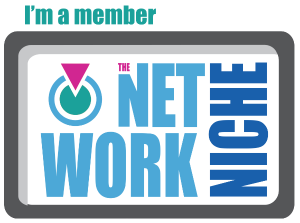If you’re among the 45% of Americans who have a side hustle, you are in good company along with the roughly 70 million people side hustling in the U.S. If you’re a working woman, you may be part of the 51% of women who actually rely on the gig economy to make ends meet. Although on average, women’s side jobs earn less than men’s, both on a yearly and hourly basis, despite the fact that women are clocking in more hours, thus perpetuating the gender gap at a rate of 35%, side hustles are still prevalent among working women. As a matter of fact, 24% of these women consider their side gigs could become a full-time job.

All in all, there are many reasons why, as a working woman, you may have or consider having a side gig. From paying off debt, to purchasing a home or making more money to pay bills, your goals may vary. However, whatever your motivation or results may be, accounting for your side job accurately is crucial. Indeed, any income you may earn from it is taxable, which makes you liable to the IRS. Additionally, there are a number of deductions you may be able to get if and when you properly account for your expenses and revenues.
Here are a few tips to properly account for your side hustle, or at least set the foundation to do so:
- Understand your side hustle
The first step to accounting for your side hustle is to understand your business. Answering basic questions such as the ones below may help to get you started:
- What are your products?
- Are you selling products or services?
- Where are your revenues coming from?
- What type of expenses do you incur?
These simple questions will help you better understand what your source(s) of income are, where your money is going in terms of expenses and expenditures, and how your side hustle works in general.
- Keep track of your income and expenses
While you may not have a fully formed business just yet, you may want to keep track of any revenue your side hustle is generating. The same rationale also applies to your expenses. Anything you’re spending as related to your side hustle, be it in supplies, technology, courses, etc, should be accounted for.
You may even think about opening a business bank account to keep track of your income and expenses. In the meantime, you can use simple and free tools like an Excel spreadsheet to keep a record of these. This will help you know whether you’re actually making a profit, and will also come in handy when it’s time to report your revenues and expenses at tax filing time.
- Carefully consider your taxes
Now that you understand how your side hustle operates and you’re starting to keep track of the revenue and expenses it generates, you can go one step further and consider some tax implications. Yes, you will have to pay taxes on your side hustle income, however, once you start generating substantial revenue, there are other tax factors to consider. For instance, if you’re selling services and/or products in a state where these are taxed, you have to collect sales tax from your customers. This is tax that you collect and then pass on to the state, consider it a pass-through tax. Keeping track of it is crucial if you don’t want to end up using your own income to pay it.
Another tax concern to keep in mind has to do with making quarterly estimated tax payments once your side gig starts generating substantial income. While you may be able to cover your business taxes with the taxes set aside from your regular employment at the beginning, after you owe more than $1,000 in taxes from your side hustle, you may need to start making estimated tax payments.
All in all, while side hustles are great ways to generate extra income and even lay the foundation for a lucrative business, they also carry with them important accounting and financial implications. The sooner you are aware of these and start looking into them, the better.
The Corporate Sister.







